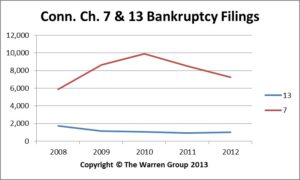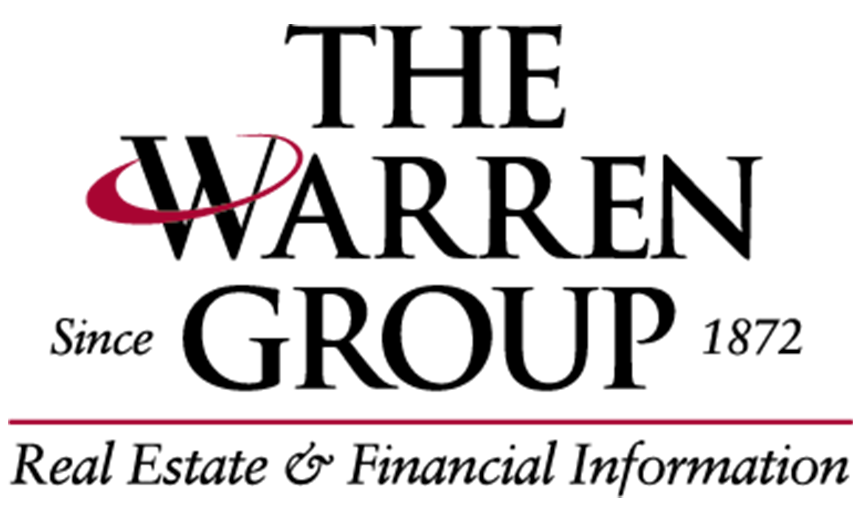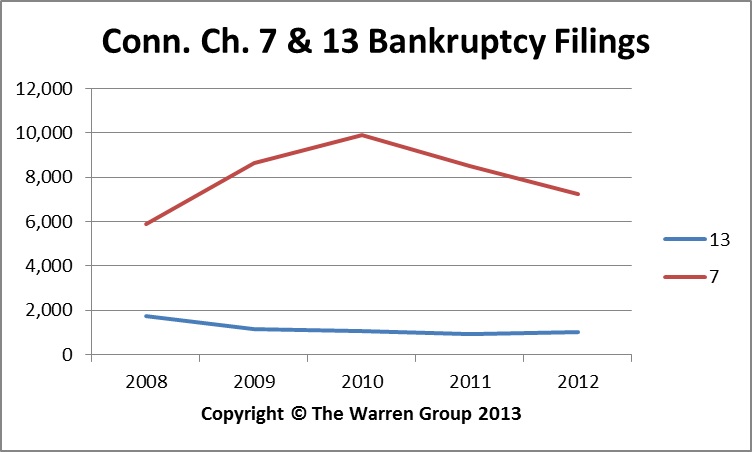 Chapter 13 Filings Increase From A Year Ago
Chapter 13 Filings Increase From A Year Ago
BOSTON, January 16, 2013 – Personal bankruptcy filings in Connecticut dropped by 15 percent to 7,242 in 2012, down from 8,518 in 2011, according to a new report from The Warren Group, publisher of The Commercial Record.
Chapter 7 is the most common option for individuals who are seeking relief from their debts, and accounted for 86 percent of bankruptcy filings in Connecticut in 2012.
In the fourth quarter, 1,628 filers statewide sought bankruptcy protection under Chapter 7, compared to 1,795 in the fourth quarter of 2011. The fourth quarter saw the slowest quarterly bankruptcy pace of 2012. The second quarter experienced the most bankruptcy volume, with 1,955 Chapter 7 filings. Fourth quarter bankruptcies were 22 percent of the annual total. In the second quarter, bankruptcies peaked for the year and represented 27 percent of the annual total.
“The drop in bankruptcy filings is an encouraging sign; it indicates that consumers are more optimistic about their ability to pay off debt and clean up their financial situations,” said The Warren Group CEO Timothy M. Warren Jr. “If the housing market – and overall economy – continues to improve, we are sure to see even better results in 2013.”
People filing under Chapter 7 bankruptcy can eliminate most debt after non-exempt assets are used to pay off creditors. In contrast, Chapter 13 requires debtors to arrange for a three- or five-year debt-repayment plan.
Chapter 13 bankruptcy filings increased more than 9 percent to 1,022 in 2012, up from 934 in 2011.
Chapter 11 filings, which are used for business bankruptcies and restructuring, also rose slightly last year. Filings increased 9.2 percent to 130, up from 119 in 2011.
A total of 8,394 filers statewide sought protection under Chapter 7, Chapter 13 and Chapter 11 of the U.S. bankruptcy code in 2012, down from 9,571 in 2011.
Bankruptcy Definitions:
Chapter 7 bankruptcy, sometimes called a straight bankruptcy, is a liquidation proceeding. The debtor turns over all non-exempt property to the bankruptcy trustee who then converts it to cash for distribution to the creditors. The debtor receives a discharge of all dischargeable debts usually within four months. In the vast majority of cases the debtor has no assets that he would lose, so Chapter 7 will give that person a relatively quick “fresh start.”
Chapter 13 bankruptcy is also known as a reorganization bankruptcy. Chapter 13 bankruptcy is filed by individuals who want to pay off their debts over a period of three to five years. This type of bankruptcy appeals to individuals who have non-exempt property that they want to keep. It is also only an option for individuals who have predictable income and whose income is sufficient to pay their reasonable expenses with some amount left over to pay off their debts.
Chapter 11 bankruptcy is typically used for business bankruptcies and restructuring. It is not commonly used by individual consumers since it is far more complex and expensive to pursue. It allows businesses to reorganize themselves, giving them an opportunity to restructure debt and get out from under certain burdensome leases and contracts. Typically a business is allowed to continue to operate while it is in Chapter 11, although it does so under the supervision of the Bankruptcy Court and its appointees.


Recent Comments